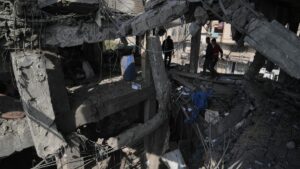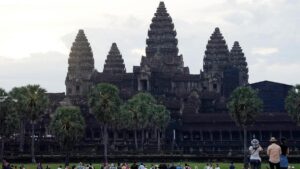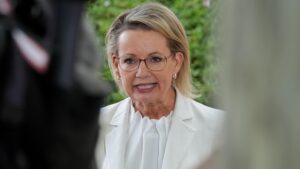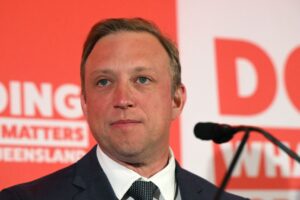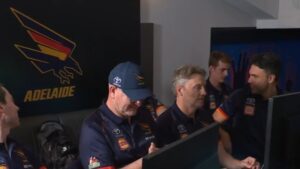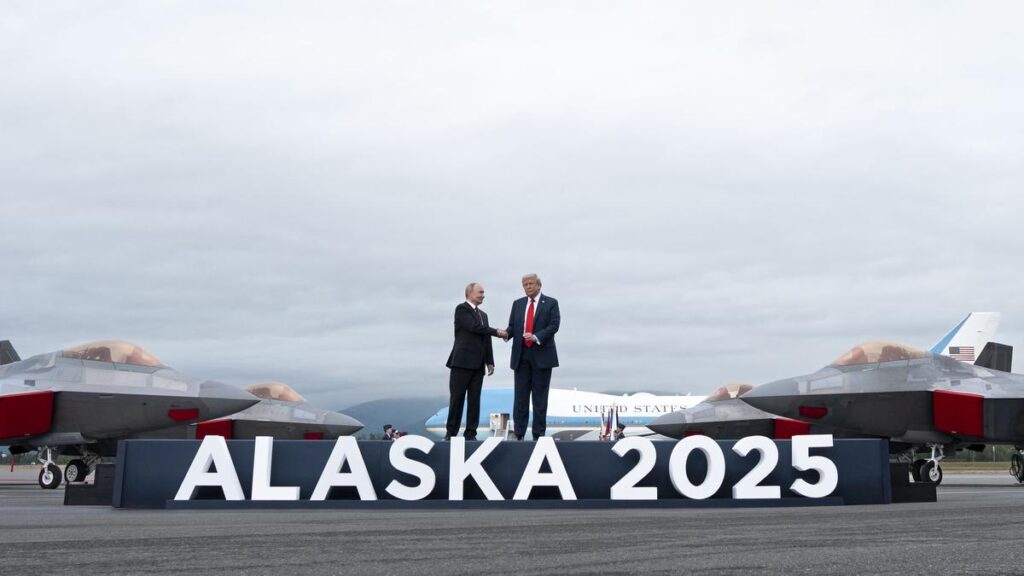
President Donald Trump and President Vladimir Putin of Russia shake hands as the met at Joint Base Elmendorf-Richardson in Anchorage, Alaska, on Friday, Aug. 15, 2025. (Doug Mills/The New York Times)
US President Donald Trump arrived in Alaska on March 15, 2025, for a crucial meeting with Russian President Vladimir Putin, aiming to negotiate a ceasefire in the ongoing conflict in Ukraine. Speaking to reporters aboard Air Force One, Trump expressed his determination, stating that he would be “not going to be happy” if Russia refuses to cooperate. He acknowledged the uncertainty surrounding the negotiations, emphasizing that “there’s nothing set in stone” regarding a potential agreement.
Trump’s call for a rapid ceasefire reflects his urgency in resolving the conflict. “I want to see a ceasefire rapidly,” he said, indicating that while he hoped for progress during the meeting, he was unsure if it would materialize that day. In a separate interview with Fox News, he declared, “I would walk” if Putin hesitates to agree on a deal to end the fighting.
Upon landing at Joint Base Elmendorf-Richardson in Anchorage at approximately 10:20 AM local time, Trump was expected to meet Putin on the tarmac. The Kremlin’s spokesperson, Dmitry Peskov, mentioned that the talks could extend for six to seven hours. The White House anticipates holding a news conference later in the day to announce any developments.
While Trump’s negotiating stance remains somewhat ambiguous, he indicated a desire to revive economic relations between the United States and Russia but noted that such discussions could not proceed until the conflict is resolved. He mentioned the possibility of discussing land swaps between Ukraine and Russia, a contentious issue that Ukraine has strongly opposed. “I’ve got to let Ukraine make that decision,” Trump acknowledged, adding that there might be avenues for security assurances for Ukraine, though not in the form of NATO membership.
In a move that raised eyebrows, Trump reached out to Belarusian President Alexander Lukashenko, a key ally of Putin and a controversial figure with a history of autocratic rule. Praising Lukashenko on social media as “highly respected,” Trump’s comments injected further unpredictability into the summit, given Lukashenko’s involvement in facilitating Russia’s invasion of Ukraine in 2022.
Summit Dynamics and Expectations
The meeting marks the seventh encounter between Trump and Putin and is significant as it occurs during Trump’s second term. His first term was marred by allegations of Russian interference in the 2016 presidential election, commonly referred to by Trump as “the Russia hoax.” This summit also represents Putin’s first visit to the United States in a decade, despite him facing a warrant for war crimes from the International Criminal Court.
As the talks unfold, the outcome remains highly uncertain, with various factors that could influence the discussions. Observers are keen to see if Putin is open to discussing a ceasefire and whether Trump will exert pressure on Russia by hinting at increased sanctions or enhanced support for Ukraine, a strategy advocated by European allies.
On the battlefield, Russia appears to be gaining the upper hand, having penetrated Ukrainian defenses in the eastern regions. Ukrainian officials have reported that Moscow has amassed troops and equipment, potentially preparing for new offensive operations.
As the world watches closely, the Alaska summit could serve as a pivotal moment in the search for peace in Ukraine, with implications that resonate far beyond the immediate conflict.

